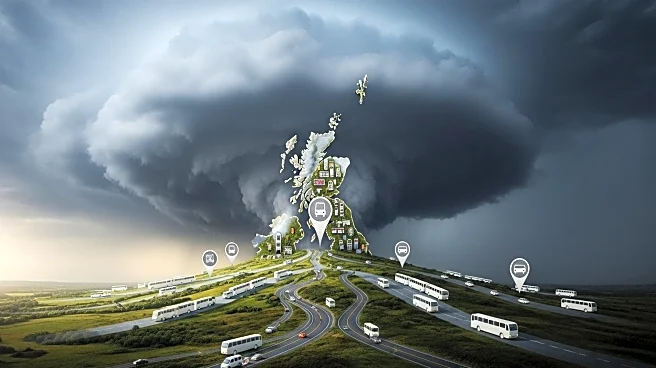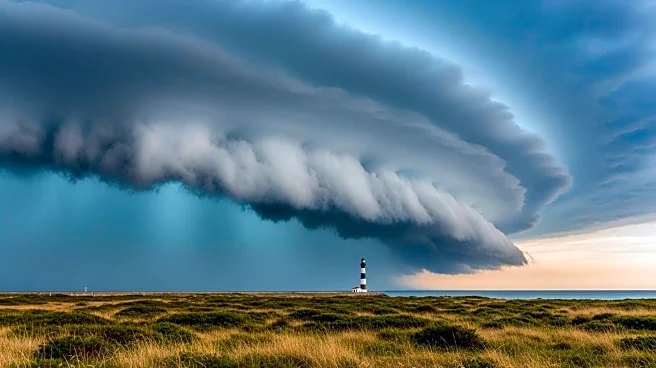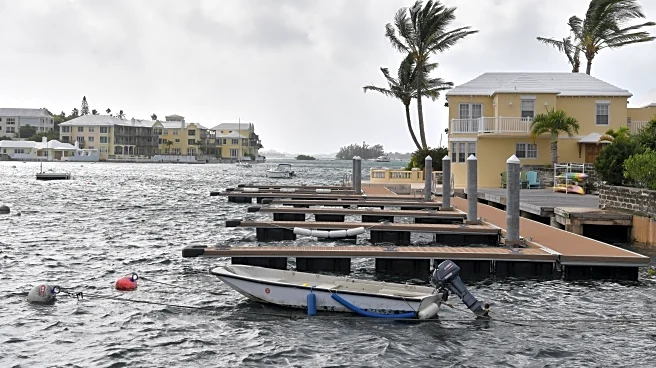What is the story about?
What's Happening?
Storm Amy, the first named storm of the season, is expected to hit the UK and Ireland with heavy rain and gale-force winds, causing significant transport disruptions in northern regions. Amber and yellow alerts have been issued for large areas of Ireland, Scotland, northern England, and Wales. The UK Met Office predicts wind gusts exceeding 80 miles per hour as the storm intensifies while tracking north of Scotland. Meteorologist Alex Burkill warns of potential travel disruptions, including road and bridge closures, ferry cancellations, and impacts on train and plane services. The storm is driven by low pressure in the Atlantic, intensified by interactions with Hurricanes Umberto and Imelda, and is expected to rapidly deepen as it crosses the jet stream.
Why It's Important?
The impending storm poses a threat to transportation infrastructure, potentially affecting daily commutes and logistics in the affected regions. The disruption could have economic implications, particularly for businesses reliant on timely deliveries and travel. Additionally, while winter storms can boost wind energy generation, the violent gusts associated with Storm Amy may damage wind farm infrastructure, potentially curbing output. The storm's impact on energy production and transportation highlights the vulnerability of infrastructure to extreme weather events, emphasizing the need for robust contingency planning and infrastructure resilience.
What's Next?
As Storm Amy approaches, authorities and transport operators are likely to implement contingency measures to minimize disruptions. This may include rerouting services, issuing travel advisories, and deploying emergency response teams. The UK Met Office will continue to monitor the storm's progression, providing updates and warnings to the public. Stakeholders in the energy sector may assess potential impacts on wind farm operations and adjust output forecasts accordingly. The broader European region may also experience weather-related challenges, with icy conditions forecasted in the Balkans and severe storms expected on the west coast of Greece.
Beyond the Headlines
The storm underscores the increasing frequency and intensity of extreme weather events, potentially linked to climate change. This raises questions about the adequacy of current infrastructure and emergency preparedness in coping with such events. The situation may prompt discussions on investment in climate-resilient infrastructure and the integration of advanced weather prediction technologies to better anticipate and mitigate impacts. Additionally, the storm's interaction with other weather systems highlights the complex dynamics of atmospheric conditions, offering insights for meteorological research and forecasting.
AI Generated Content
Do you find this article useful?















